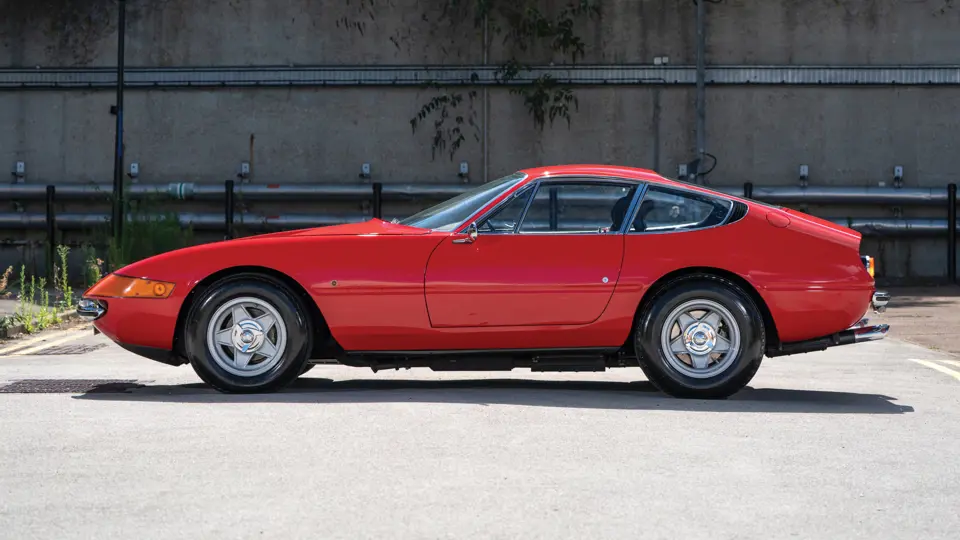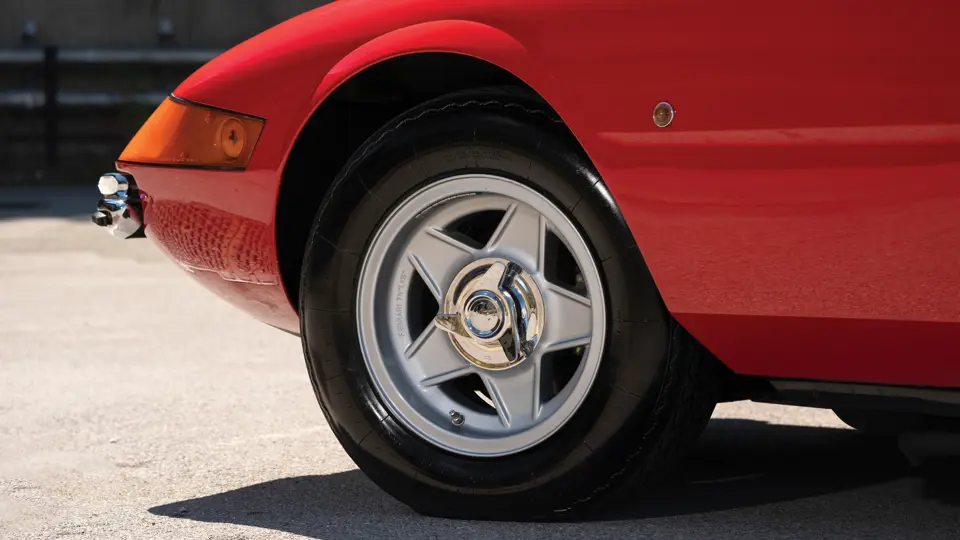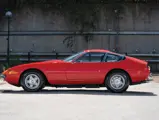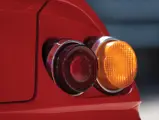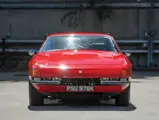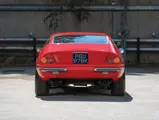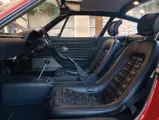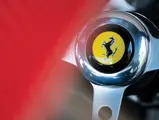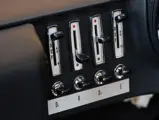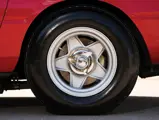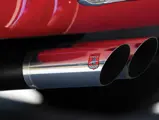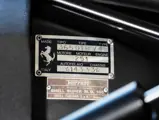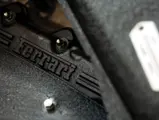
1971 Ferrari 365 GTB/4 Daytona Berlinetta by Scaglietti
{{lr.item.text}}
£490,000 - £540,000 GBP | Not Sold
{{bidding.lot.reserveStatusFormatted}}
- One of 158 right-hand-drive 365 GTB/4 Daytonas
- Extensive documentation dating to the 1970s
- Reportedly driven in 1990 and 1991 Cannonball Runs
- Recent engine rebuild
The radical Ferrari 365 GTB/4 that sat under the bright lights of the Ferrari stand at the 1968 Paris Motor Show brought the automaker into a new era. Its headlights hidden behind Perspex covers gave it a streamlined look that had more in common with supercars than long-roof, grand-touring machines meant for trans-continental travel. At the rear, the 365 GTB/4’s truncated tail was an exercise in restraint with two light clusters sitting above delicate chrome bumpers with black rub strips.
Beautifully balanced yet aggressive in stance, it was the 365 GTB/4 that set the tone for Ferrari’s next couple of decades. The company retained Pininfarina design chief Leonardo Fioravanti as he helped the brand evolve from sumptuous to edgy. Later versions of the 365 GTB/4 gained retractable headlights, giving the design an even cleaner look.
Under its long bonnet, the 365 GTB/4 marked less of a departure from tradition with its 4.4-litre Colombo narrow-angle V-12, producing 352 bhp. A five-speed manual gearbox with Ferrari’s signature gated shifter was, of course, standard fare. At the time, the 365 GTB/4 was billed as the fastest car in the world. Autocar clocked one at just 5.4 seconds in the 0–60 mph sprint, about half a second faster than the Lamborghini Miura, and found that it topped out at 174 mph.
The 365 GTB/4 quickly picked up its Daytona nickname since Scuderia Ferrari’s now-legendary 1-2-3 finish at the 1967 24 Hours of Daytona was still a fresh memory. Contemporary motoring press gushed about the 365 GTB/4 Daytona, prompting Dan Gurney and legendary American automotive journalist Brock Yates to drive one from New York to Los Angeles in just 36 hours. Yates noted in a 1997 Car and Driver article that Gurney drove the car through one particularly desolate stretch of California interstate for 20 miles ‘with the tachometer wavering at 7,100 rpm in fifth gear’ and that ‘the car was so stable that Gurney drove several of those 20 miles one-handed.’
The right-hand-drive example offered here was delivered new to Norman Buckley, hardly a stranger to high performance himself. In the 1950s and 1960s, Mr Buckley broke world water speed records in powerboats and hydroplanes at Lake Windermere in the UK.
Buckley placed his order through Maranello Concessionaires in Surrey in early 1974, specifying Rosso Chiaro paint over black leather trim at a cost of £7,789.79. His new Daytona, bearing chassis no. 14333, was completed on 14 June 1971, and was picked up at the factory in Maranello.
Its original number plates were discarded in favour of ‘CEO 5’, which the car retained through subsequent owners after Mr Buckley’s passing in 1973. His widow passed the Daytona on to their close friend, Allan Langtree, who kept it until 1987. Langtree sold the Daytona to his friend, Mike Lake, who drove it extensively over the next 20-plus years across Europe. During this time, the car had suffered a slight run-in with a Citroën 2CV, necessitating very minor repairs to the front bumper, but which is beautifully documented in the history file, including highly amusing insurance paperwork. According to a report from noted Ferrari historian Marcel Massini, Mr Lake and actor/Ferrari enthusiast James Coburn allegedly teamed up to drive it in the Cannonball Run in 1990 and 1991. Needless to say, this Daytona has considerable performance provenance.
More recently, the 365 GTB/4 Daytona had its original engine rebuilt by marque specialist Vic Cartmill at Ferranti Engineering in 2016. It will be delivered to its next owner with a tool roll, substantial records and its original manuals. It shows well with paint and body refurbishment performed recently. Five-spoke Cromodora alloy wheels wrapped in period Michelin rubber keep its appearance true to Fioravanti’s original vision. Inside, the Daytona features full leather upholstery including a correct leather-wrapped dashboard rather than the suede often fitted in Maranello.
As one of just 156 right-hand-drive Daytonas, this example is ready for its next owner to wind out its V-12 on a continental journey.
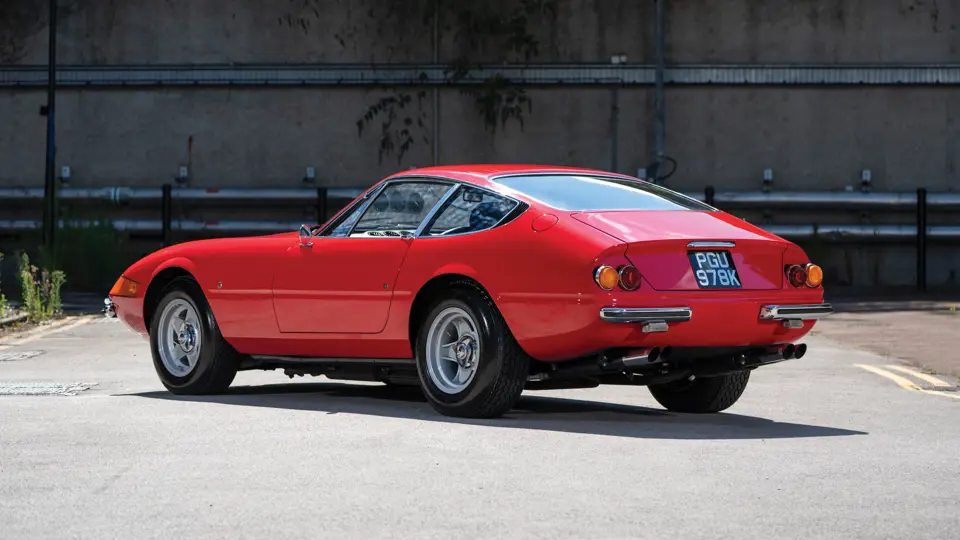



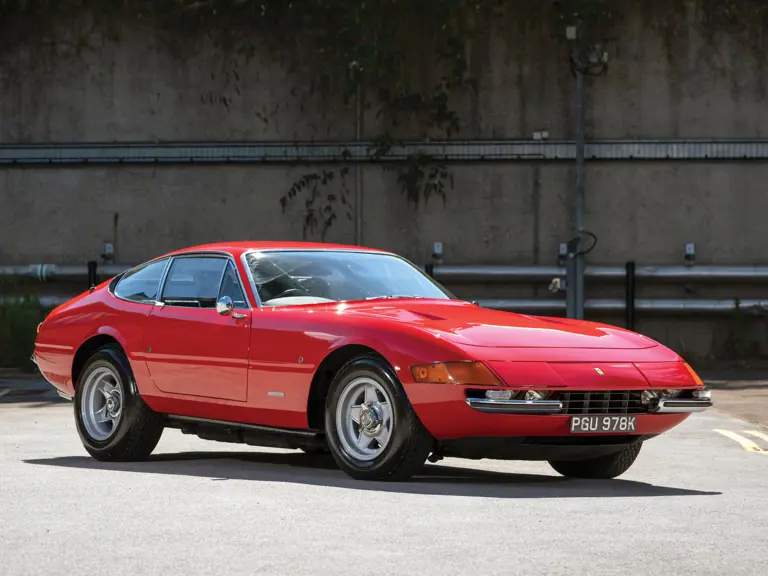
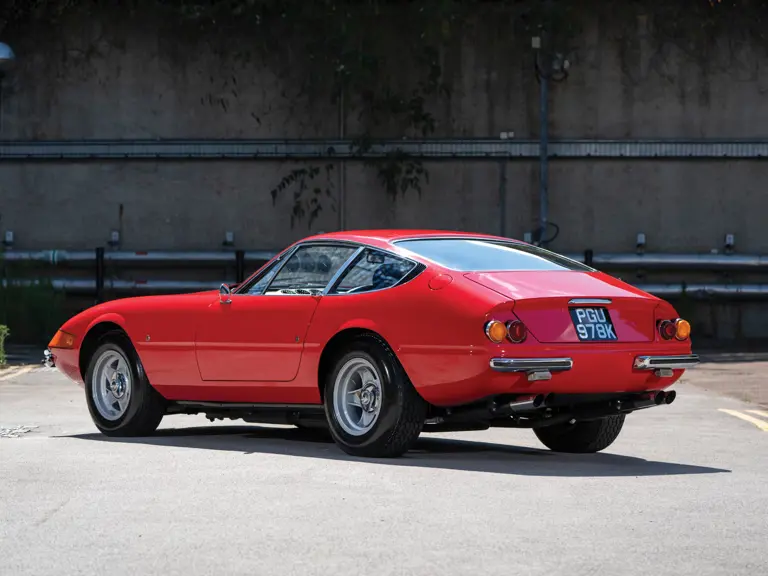
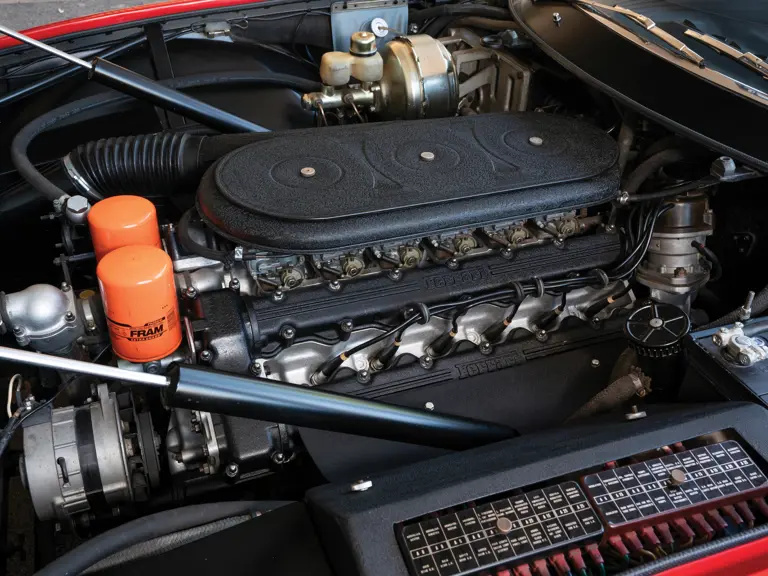
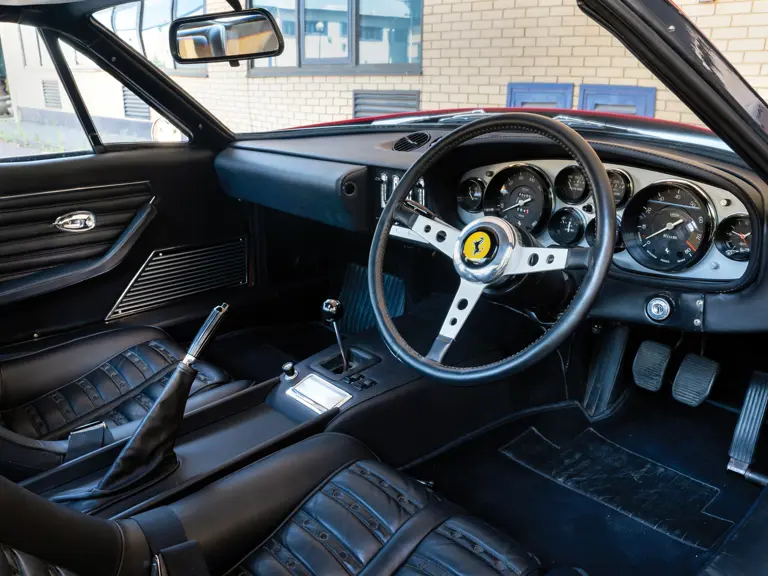

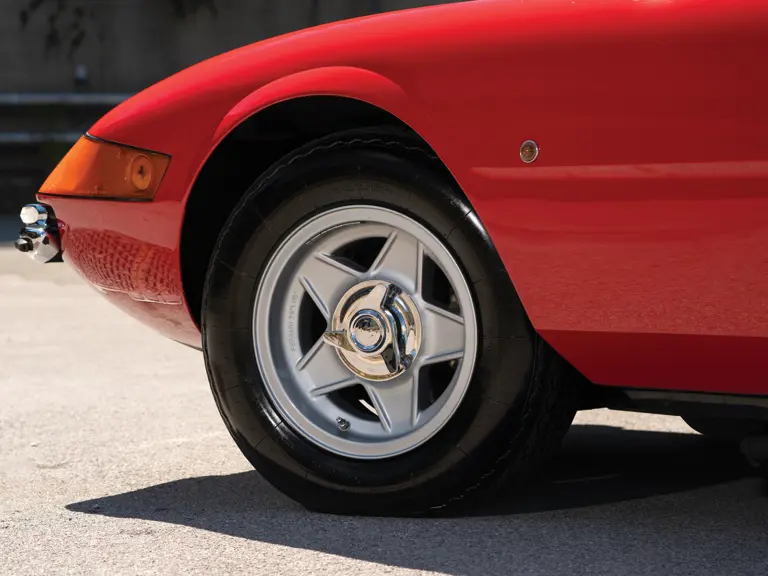

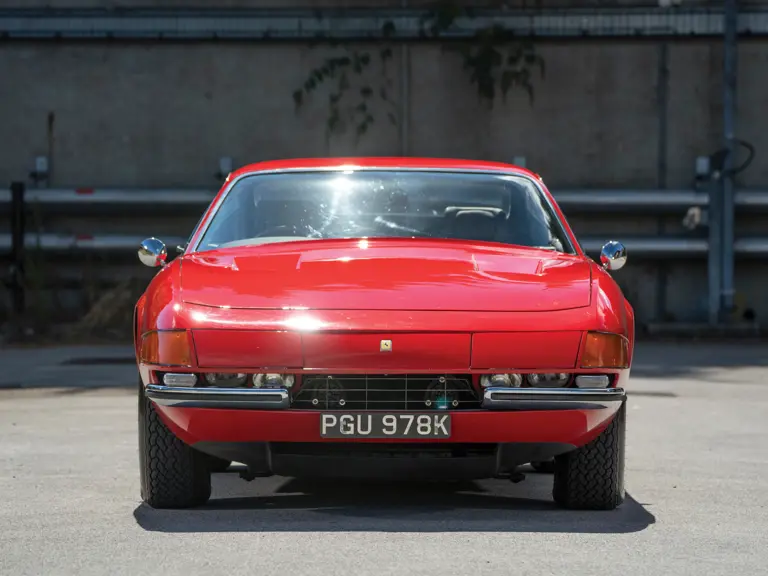
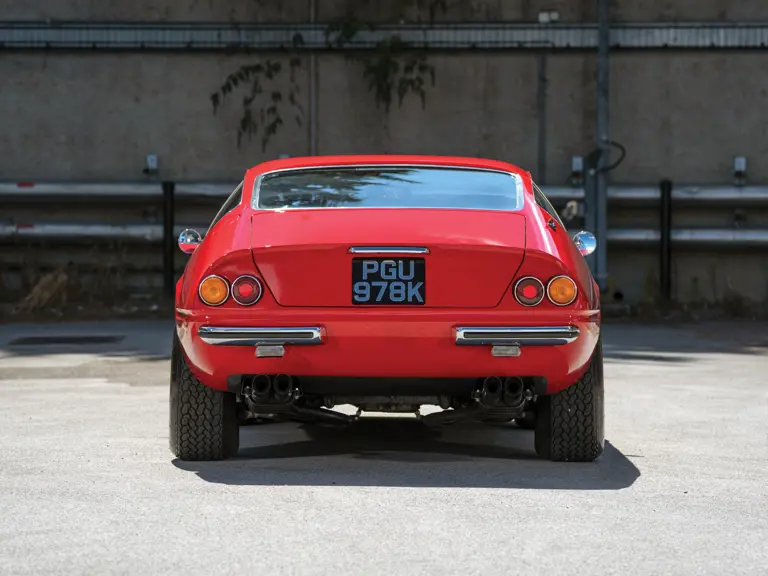
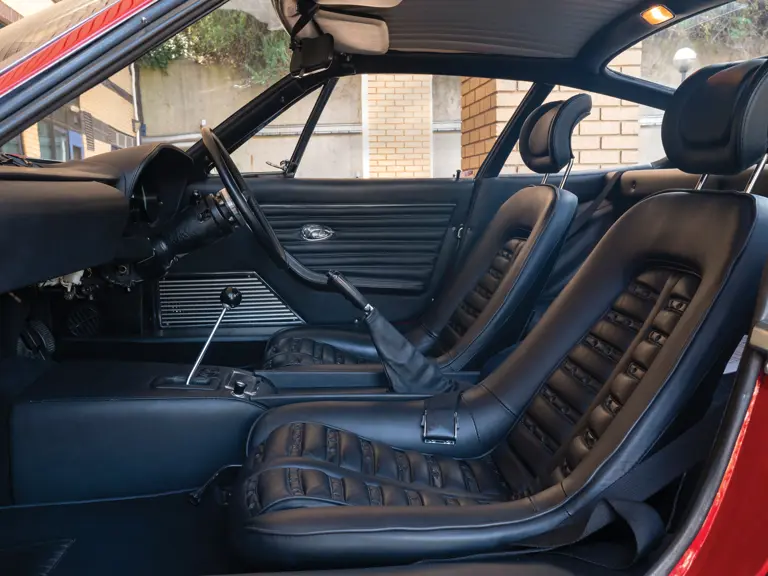
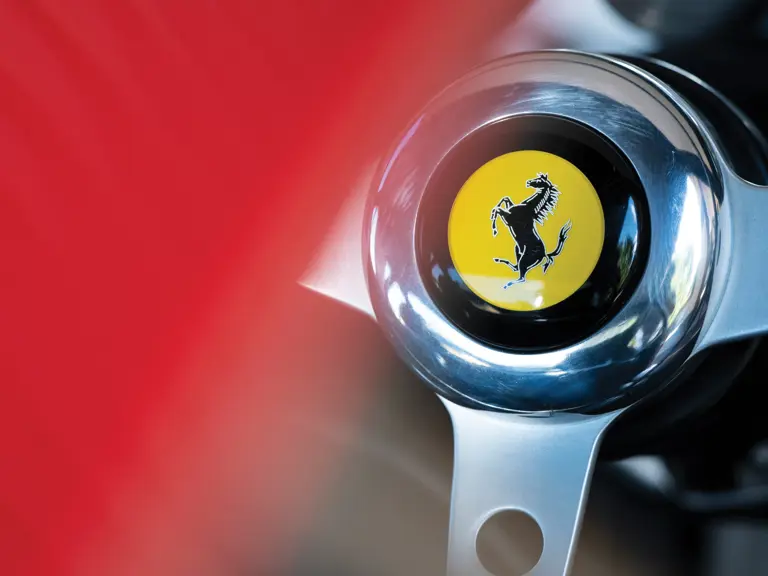
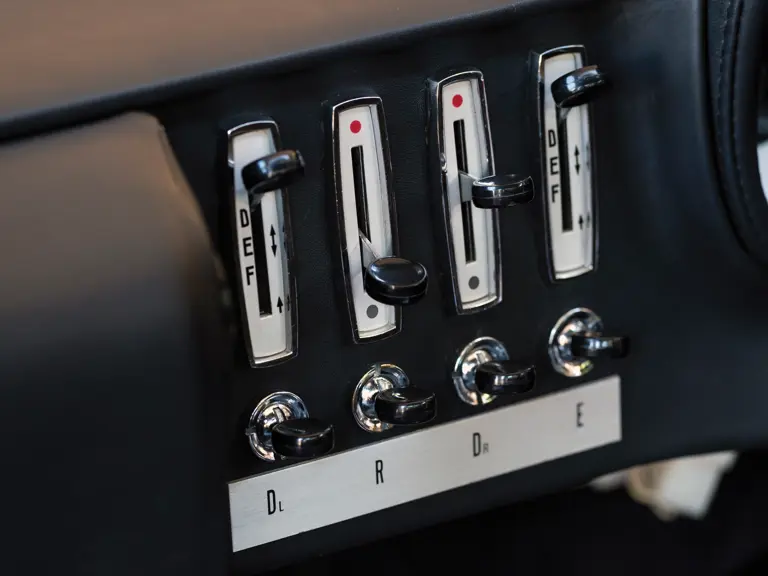
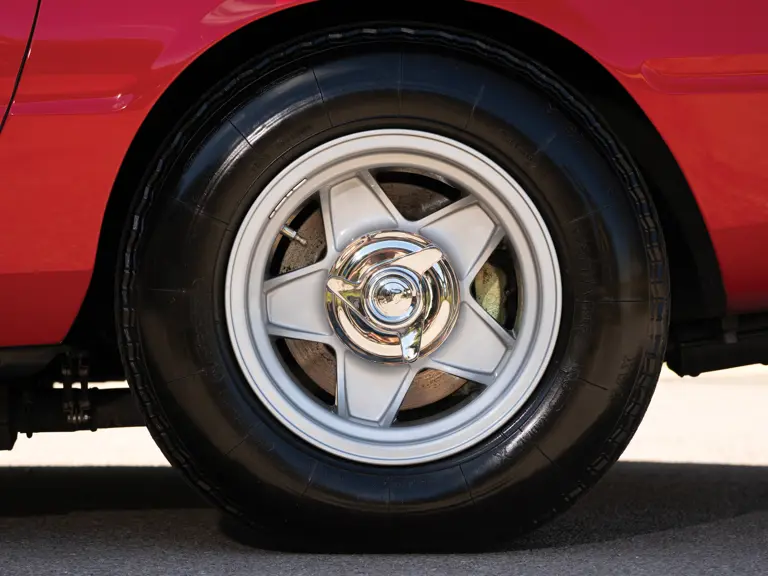
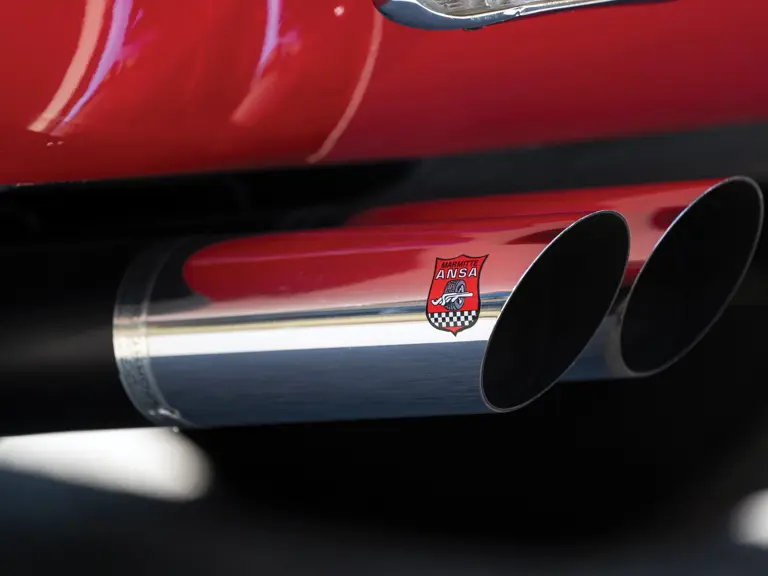
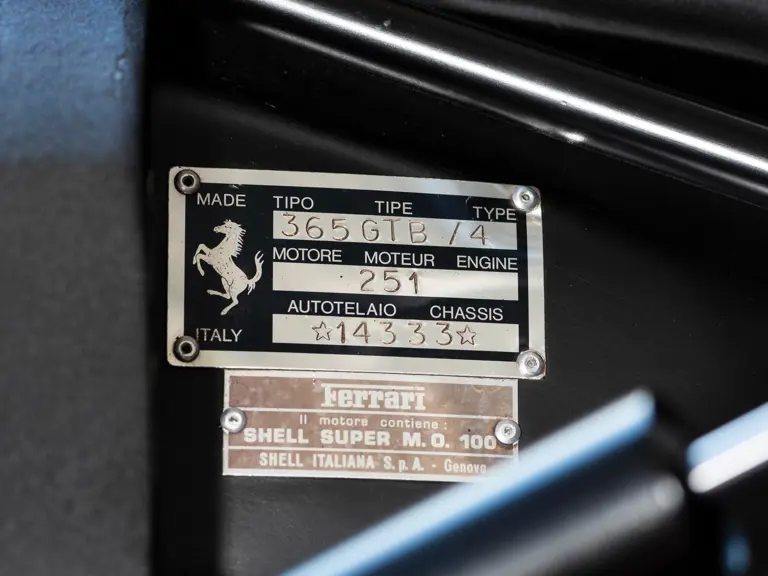
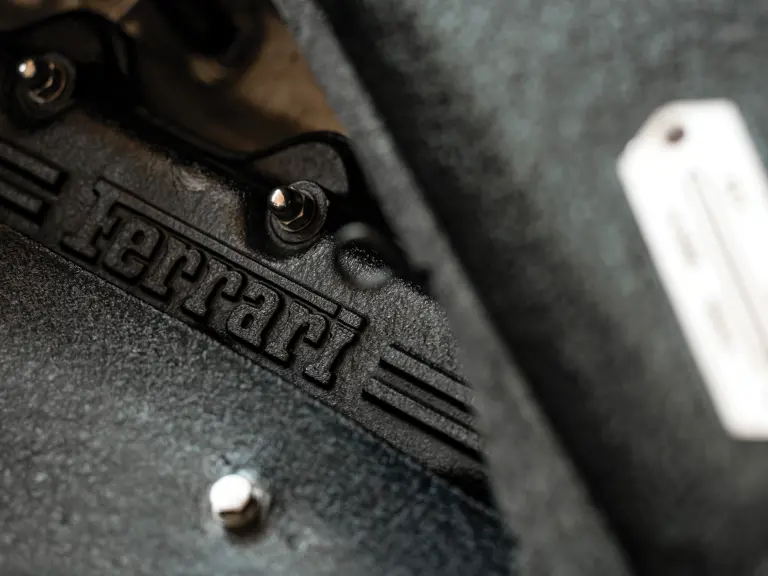
 | London, United Kingdom
| London, United Kingdom
